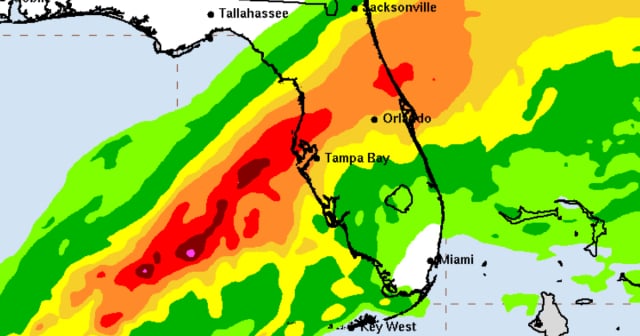The meteorologist Peter Dodge was honored by scientists from the National Oceanic and Atmospheric Administration (NOAA), who were his coworkers, during a flight of a hurricane hunter plane, from where they scattered his ashes in the eye of Hurricane Milton, thus fulfilling one of his greatest wishes.
It was on October 8, while Hurricane Milton was moving about 300 miles southwest of Florida, that 20 colleagues of the meteorologist scattered his ashes from an airplane in the center of the storm, a year and a half after his passing in March 2023, at the age of 72 due to a stroke.
Several international media outlets reported on this tribute to a meteorologist who worked for the NOAA for 44 years.
During the flight, the crew read the poem "Peace, my Heart" by Rabindranath Tagore. Meanwhile, Shirley Murillo described her former colleague as a man passionate about his fieldwork and research, especially in flight missions to monitor hurricanes.
"Scattering his ashes in the eye of the hurricane was our way of honoring his legacy of adventure and teamwork," commented Murillo, deputy director of the NOAA Hurricane Research Division.
Dodge, who died in March 2023, had conducted more than 386 hurricane research flights.
The ashes placed in Milton's eye were wrapped in the flag of the state of Florida, along with the label with his name on the flight suit and a hurricane penetration patch, indicating the number of flights he had made in the midst of storms. Dodge’s remains also included an image of the flag of Nepal to honor his time in the Peace Corps.
The acting director of the Physical Oceanography Division at NOAA, Laura Chaibongsai, noted about this tribute that similar sea burials have been conducted in the past for other members of NOAA's hurricane hunting team.
Michael Lowry, a hurricane specialist and expert on storm surges from WPLG in Miami, described the dispersion of the ashes and a vortex data message sent by the plane to gather information about Milton, which included a tribute to Dodge's final mission, as a "beautiful tribute."
“PETER DODGE HX SCI (1950-2023) 387TH PENNY,” it said, and “387th” referred to the number of his flights.
Dodge, who became an expert in radar data processing, also designed flight modules and worked with researchers focused on the arrival of storms on land. He was also remembered for his mentorship of "numerous young scientists in his career."
He received numerous honors, including the Patriotic Civil Service Award from the Army Corps of Engineers. He continued to work even after losing his sight.
The flight, which served as a tribute, was also used to collect real-time information about Milton for the National Hurricane Center (NHC).
What do you think?
COMMENTFiled under:
